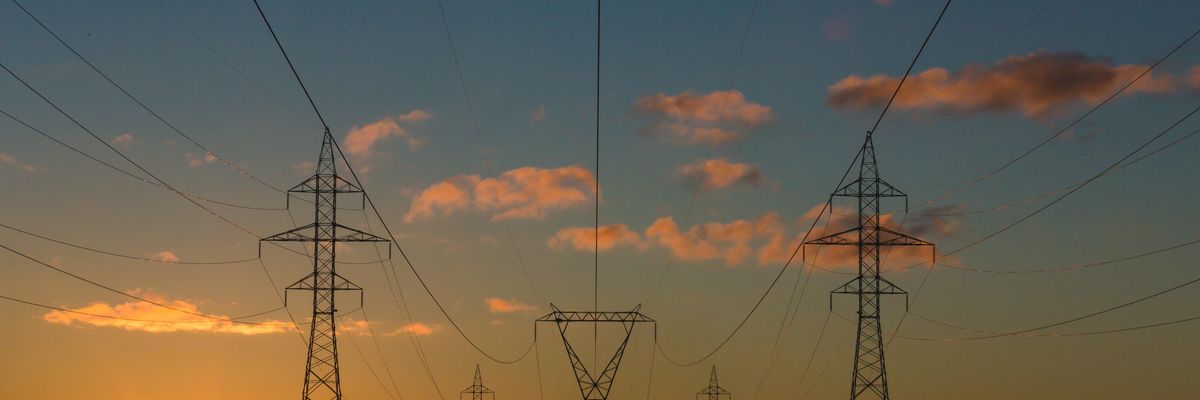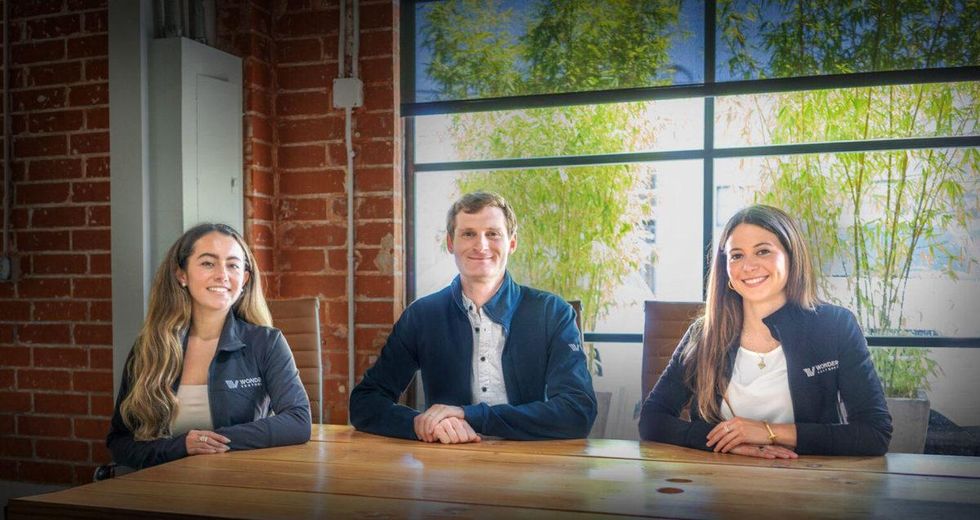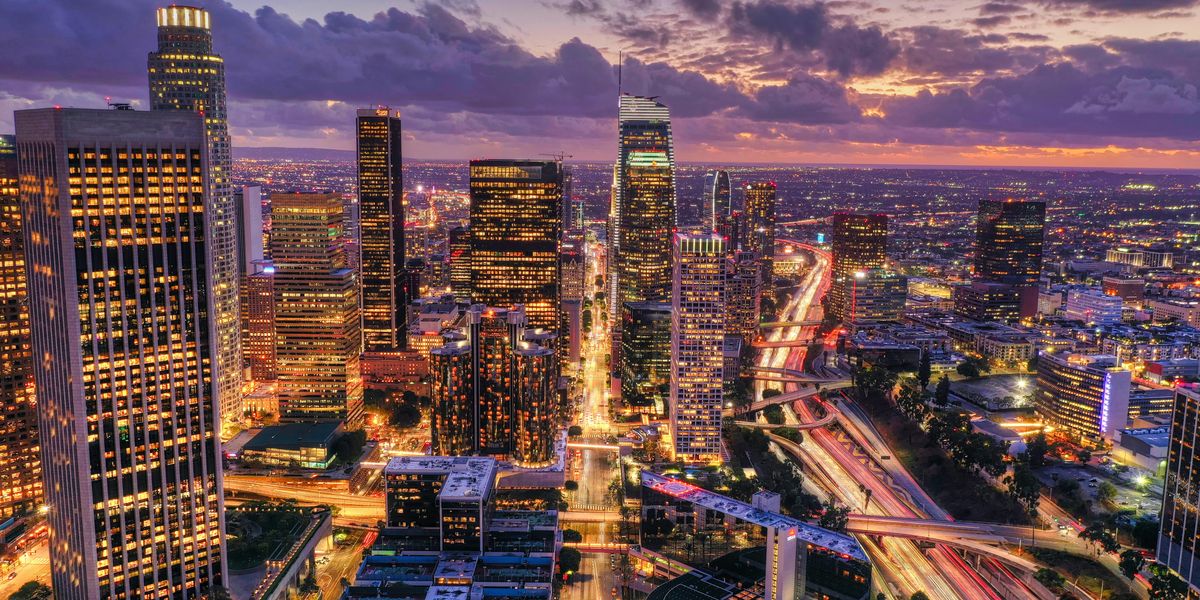

Get in the KNOW
on LA Startups & Tech
X
Photo by Matthew Henry on Unsplash
Here's What EVs Are Doing to California's Energy Grid
David Shultz
David Shultz reports on clean technology and electric vehicles, among other industries, for dot.LA. His writing has appeared in The Atlantic, Outside, Nautilus and many other publications.
If you’ve been outside lately in Southern California, you’ll know there’s an ongoing heatwave here. In something of an annual tradition, the electricity grid is under duress because of the heightened demand for power-hungry air conditioners.
In response, the California Independent Systems Operator, which oversees the state’s electric grid, has issued “flex alerts,” which are essentially pleas to residents to conserve power during peak usage (4 p.m. to 9 p.m.) by turning off appliances, air conditioning, setting thermostats to 78 degrees Fahrenheit, and refraining from charging electric vehicles.
This last item–don’t charge your EVs–has drawn some schadenfreude from some news outlets which point out that, just last week, the state announced plans to ban new gas car sales. How can California possibly hope to power a fleet of around 20 million electric vehicles in the future when it can hardly power around 1 million cars today?
Whether or not it’s being asked in good faith, it’s a valid question. So here’s an explainer about what exactly is going on with the grid and the role that EVs will likely play in the future.
The problem is that it’s too hot right now. As always, no one can claim that climate change caused this heatwave, but the overwhelming majority of scientists agree that human-caused climate change is making heatwaves like this one more common. The future will certainly have more such heat events than the present, especially if we don’t find a way to reduce or eliminate carbon emissions.
When it’s too hot, people use a lot more air conditioning. Air conditioning is especially energy-intensive. The result is that–all at once–there’s more demand for electricity. When demand outstrips supply, blackouts occur.
“People think of ‘the grid’ as this uniform system. But really, it's a bunch of electrical connections that have evolved over time,” says Cascade Tuholske, an assistant professor of Human-Environment Geography at Montana State University. “Some aspects of the grid are super antiquated. And you can't just pump more electricity into a system without upgrading it.”
You can imagine the electrical grid sort of like plumbing. Like water in pipes of different diameters, there’s a maximum amount of electronics that can flow through different grid architectures, so simply adding more energy into the system doesn’t necessarily solve the problem.
The California electric grid, in other words, has failed to keep pace with the increasing demand for air conditioning. Or, as California Gov. Newsom put it in a press conference yesterday, “All of us have been trying to outrun Mother Nature, but it’s pretty clear Mother Nature has outrun us.”
Even without the increased demand from electric vehicles, the grid needs upgrades. But EVs–even a whole state’s worth–don’t add as much demand to the grid as fossil fuel advocates might suggest. The main reason EVs aren’t likely to cripple the grid is that they don’t all charge at the same time and they don't usually charge when demand is high. Like with smartphones, most EV charging happens overnight, while the car sits in the garage, while people aren’t awake to use appliances, while demand for air conditioning is lowest.
Nationally, EV charging accounts for just .2% of energy grid consumption, by some estimates. Adding a nation of EVs will absolutely add demand for electricity to the grid–as much as 25% more, according to scientists–but this transition is going to happen slowly, over time. Even California, which has the most ambitious EV adoption policy, is allowing 13 years before banning gas-powered car sales. It will probably be 30 years or more before 90% of the cars on the road are electric. The demand for more power will ramp up slowly, just as it has historically as Americans bought refrigerators, air conditioners, computers, etc.
President Biden’s Inflation Reduction Act includes massive amounts of funding to address these exact issues, including $2.5 billion to “modernize and expand capacity of America’s power grid.”
Ironically, EVs actually may offer help to a stressed electrical grid if they’re used correctly. Cars with full batteries can be plugged in and used to supply energy to the grid – just as they did a month ago when Tesla pooled energy from its users’ vehicles to boost California’s supply. Of course this will drain your car’s battery, but you should be able to get paid for your troubles. A 50kWh battery like what’s found in an electric vehicle is more than enough to power the average house for a day.
“At least in theory, if they're integrated into the grid, you can draw the power off your EV battery during periods of excess demand,” says Tuholske.
From Your Site Articles
- B2U Transforms Electric Car Batteries into Solar Storage - dot.LA ›
- Is Hydrogen Energy a Solution to the World's Fuel Woes? - dot.LA ›
- Can California Microgrids Help Save Us from Blackouts? - dot.LA ›
- Text message urges California residents to conserve power - dot.LA ›
- California Heatwave: Businesses Work To Save Power Grid - dot.LA ›
- Electric Vehicles Can Power a Lot More Than Vasectomies - dot.LA ›
- NFL 'Thursday Night Football' Debuts on Amazon Prime - dot.LA ›
- Electric Vehicles Can Power a Lot More Than Vasectomies - dot.LA ›
- INDIEV Partners with Foxconn to Launch Electric SUVs - dot.LA ›
- The Impact of an EV Takeover On California's Power Grid - dot.LA ›
- KB Home Launches First Microgrid Community In California - dot.LA ›
- Hexagon Purus: Zero Emission Solutions to Trucking - dot.LA ›
Related Articles Around the Web
David Shultz
David Shultz reports on clean technology and electric vehicles, among other industries, for dot.LA. His writing has appeared in The Atlantic, Outside, Nautilus and many other publications.
Wonder Ventures Launches $31 Million Fund Focused Exclusively on LA Startups
09:00 AM | January 13, 2022
Cameron Venti | Unsplash
After hitting the jackpot with hometown bets like shopping app Honey, Los Angeles venture capital firm Wonder Ventures is doubling down with a new early-stage fund focused exclusively on L.A. startups.
Santa Monica-based Wonder has raised $31 million for its new venture fund, founder and managing partner Dustin Rosen told dot.LA. The new fund is double the size of the $15 million pre-seed fund that Wonder raised in 2018, and like that one it will target fledgling L.A.-based startups that Rosen believes are too easily overlooked by larger VCs.
“The L.A. ecosystem is really mature as far as a place to build technology companies, and more capital than ever is coming into L.A. to fund our companies as they grow and scale toward an IPO,” Rosen said, noting that Wonder already deploys more than 90% of its capital in Southern California-based ventures. “We still believe that the earliest stage is underfunded—pre-traction and pre-seed. That stage is the hardest time to raise and get elite investors, and that explicitly is what Wonder does.”
Rosen pointed to an eclectic group of more than 60 L.A.-based founders and tech executives who have invested in its latest fund, including those from current and former Wonder portfolio companies like Clutter, Tala, and Honey. Other investors from local startup success stories like Snap, GoodRx, and Dollar Shave Club also pitched in.

Among the first companies to be funded by the new vehicle is RealAppeal, a Santa Monica-based startup that finds savings in homeowners’ property tax assessment bills through an appeals process. Rosen said he filed his own appeal on the company’s website as its founders made their pitch to him on the phone. “I hope to save thousands of dollars,” he noted.
Among Wonder’s most successful investments to date has been Honey, the ecommerce rewards app that PayPal acquired for $4 billion in 2019. The VC’s initial early-stage investment in the Arts District-based startup returned an exit worth more than Wonder’s entire $5 million first fund, according to Rosen.
The firm’s largest portfolio holding today is WhatNot, the Marina del Rey-based livestream auction marketplace that raised more than $220 million in venture capital last year on the way to reaching a unicorn valuation of $1.5 billion. That investment has proven even more lucrative than its bet on Honey; Rosen noted that the current value of Wonder’s stake in WhatNot is “worth more than the entire [$15 million] second fund.”
In addition to launching the new fund, Wonder has made two new hires to help oversee its portfolio of nearly 80 companies. Valentina Rodriguez, formerly an analyst and trader with Morgan Stanley, has joined the venture firm as a senior investor, while Taylor Bolhack, previously with Santa Monica-based micromobility operator Bird, has been named head of platform and community.
Wonder Ventures isn’t the only L.A-based VC firm targeting local seed and pre-seed startups. After five years with San Francisco-based Crosslink Capital, investor Joe Guzel has launched a fintech-focused early-stage fund with McLain Southworth called Haven Ventures, Guzel told the LA Venture podcast this week.
Read moreShow less
Pat Maio
Pat Maio has held various reporting and editorial management positions over the past 25 years, having specialized in business and government reporting. He has held reporting jobs with the San Diego Union-Tribune, Orange County Register, Dow Jones News and other newspapers in Ohio, West Virginia, Maryland and Washington, D.C.
Cap Tables to Costumes: Whatnot’s Mega Round and Your LA Weekend Plan 🎃
10:39 AM | October 31, 2025
🔦 Spotlight
Happy Friday Los Angeles!
Live shopping’s LA moment
Whatnot, the LA born marketplace for live auctions, raised $225 million at an $11.5 billion valuation. The round was co led by DST Global and CapitalG, with Sequoia, Alkeon, a16z, Greycroft, BOND, and others participating. The company says the money goes to international expansion, trust and safety, and seller tools - fuel for a category that has moved from “Is this a fad?” to “How big does this get in the West?”
Why it matters
If that valuation sounds sudden, you’re not imagining it. Whatnot’s last raise in January valued the company around $5 billion. Less than 10 months later, the number has more than doubled, tracking a year of surging GMV and a social commerce flywheel spinning across TikTok Shop, YouTube, and Amazon. For LA, it’s a marquee bet on the creator commerce stack we do best: community, content, and culture that converts
The bigger picture
The implications go well beyond trading cards. Live, personality led storefronts are evolving from hobby to underwritable small business. If Whatnot uses this cash to keep fraud low and throughput high, we could see an LA export take root globally, not just as an app category but as a job category. That is a storyline to watch into Q4 and beyond.
From cap tables to costumes: Halloween in LA 🎃
You’ve earned some offline fun. Heading into Halloween weekend (Oct. 31–Nov. 2), LAist’s guide has a little of everything: neighborhood Día de los Muertos celebrations (from the Canoga Park family festival to an ofrenda for pets at Annenberg PetSpace in Playa Vista), the Frogtown Arts weekend along the LA River, plus plenty of screenings and concerts across town. Bookmark the list, pick your neighborhood, and maybe swap “add to cart” for “add to calendar.”
Send tips, sightings, and spooky term sheets our way. Venture deals for LA companies, funds, and acquisitions are below.
🤝 Venture Deals
LA Companies
- Bryan Johnson’s longevity startup Blueprint raised $60M from a celebrity heavy group of backers including Kim Kardashian, Naval Ravikant, Alex Hormozi, Ari Emanuel, and the Winklevoss twins to turn Johnson’s personal Blueprint regimen into a broader consumer platform. The company says the funding will help package diagnostics, biomarker tracking, prescriptions, nutrition, and other longevity services into an accessible offering. The round underscores mainstream interest in data driven wellness despite past questions about Blueprint’s trajectory. - learn more
- Rarity PBC raised $4.6M in seed financing to advance a one-time, autologous blood-stem-cell gene therapy for ADA-SCID (“bubble baby” disease) that it has licensed from UCLA researcher Dr. Donald Kohn. The round, led by biotech investor Steve Oliveira (Nemean Asset Management), will support manufacturing and steps toward commercial readiness. - learn more
- Fruitist raised $150M led by a vehicle managed by J.P. Morgan Asset Management, with participation from Aliment Capital and Ray Dalio’s family office. The LA-based superfruit brand says the funding will fuel crop expansion, cold storage, and automation as it scales distribution to 12,500+ stores and targets continued growth following roughly $400M in trailing sales. - learn more
- Homecourt, the Los Angeles based luxury home and personal fragrance brand founded by Courteney Cox, raised an $8M Series A led by CULT Capital. The company says the funding will fuel brand marketing, team hires, and infrastructure as it expands beyond DTC into 300+ retail doors including Nordstrom, Bluemercury, and Revolve. Homecourt has broadened from home care into body and laundry collections since launching in 2022. - learn more
LA Venture Funds
- Aliavia Ventures participated in Human Health’s $8.5M raise, joining LocalGlobe, Airtree, Skip Capital and Scale Investors to back the precision health platform from former Canva product leaders Georgia Vidler and Kate Lambridis. The funding will support international expansion, deepen product intelligence in areas like women’s health, respiratory and pain, and scale Human Evidence for patient driven research; Human Health reports more than 200,000 users and 20 million logged health actions to date. - learn more
- Riot Ventures participated in EnduroSat’s $104M funding round, alongside Google Ventures, Lux Capital, the European Innovation Council Fund, and Shrug Capital. The Sofia based satellite manufacturer says the capital will scale production of its ESPA class (200 to 500 kg) modular satellite buses, targeting capacity of up to two satellites per day at a new 188,340 square foot Space Center so constellation customers can get to orbit faster. The raise is EnduroSat’s second this year and follows a €43 million round in May. - learn more
- Rocana Venture Partners participated in Recess’s $30M Series B, which was led by CAVU Consumer Partners and included Midnight Ventures, Torch Capital, Doehler Ventures, KAS Venture Partners, Vanquish, and Craig Kallman. The relaxation-beverage company will use the capital to grow its team, expand retail distribution, and ramp marketing, and it also named former Nutrabolt executive Kyle Thomas as President and Co-CEO to help scale the brand. Recess says it now sells in more than 15,000 U.S. stores, positioning it to capitalize on demand for functional relaxation and alcohol-alternative drinks. - learn more
- Terasaki Institute participated in iOrganBio’s $2M launch financing, joining First Star Ventures (lead), IndieBio, Cape Fear BioCapital, 2ndF, and Alix Ventures. The Chapel Hill based startup unveiled CellForge, an AI powered cell-manufacturing platform that pairs predictive models with high throughput control to engineer reproducible human cells and organoids for drug discovery and cell therapies. The funds support product development and early deployments. - learn more
- Fox Sports made a strategic investment in Shadow Lion, the creative agency and IP studio co-founded by Tom Brady, forming a partnership to develop talent-led originals, digital content, long-form projects, and marquee live events. The deal includes a new Los Angeles hub for Shadow Lion on the Fox lot, with early tentpoles including a University of Michigan football docuseries from executive producers Brady and Jim Harbaugh and collaboration on the Fanatics Flag Football Classic. - learn more
- EB Medical Research Foundation participated in Eliksa Therapeutics’ funding to advance ELK-003, a biological eye drop for ocular complications in epidermolysis bullosa. The round, led by DEBRA Research with support from Cure EB, the Abe Fund, and EB Research Partnership, backs an ongoing pilot study with 18 patients enrolled and no drug-related side effects reported among the first eight who completed treatment. - learn more
- Patron and HartBeat Ventures participated in Sweatpals’ $12M seed round alongside a16z speedrun, backing the community fitness platform as it expands its “daylife” model of IRL wellness events. The funding will support product and market expansion for hosts and gyms using Sweatpals for discovery, ticketing, memberships, and marketing. Business Insider reports the startup now reaches over 1 million monthly users and is growing into new U.S. cities. - learn more
- UP.Partners participated in Lula Commerce’s $8M Series A, led by SEMCAP AI with Rich Products Ventures, GO PA Fund, NZVC, Green Circle Foodtech Ventures, and Outlander VC also joining. The Philadelphia company, active with more than 2,000 retailers, offers an AI powered digital commerce suite for convenience stores covering order ahead, pickup, delivery, and back office tools, and says the round brings total funding to over $16M to meet rising demand. - learn more
- Navitas Capital led WorkHero’s $5M seed to scale its AI powered back office platform for small HVAC contractors, with Workshop Ventures, York IE, and strategic angels also participating. WorkHero combines agentic AI with human account managers to handle invoicing, permits, rebates, warranty registrations, and pricebooks so owners spend less time on admin. The funding will expand engineering and product and add new services such as call answering and bookkeeping. - learn more
LA Exits
- DMI was acquired by Stingray, adding about 8,500 U.S. retail locations to Stingray’s in-store audio advertising network and bringing its total footprint to roughly 33,500 sites. The deal cements Stingray’s leadership in pharmacy retail audio across the two largest chains and brings DMI’s creative services, including cinema advertising and brand marketing, under its umbrella, with CEO Tena Clark staying on to help integrate and expand the offering. - learn more
Read moreShow less
RELATEDTRENDING
LA TECH JOBS


